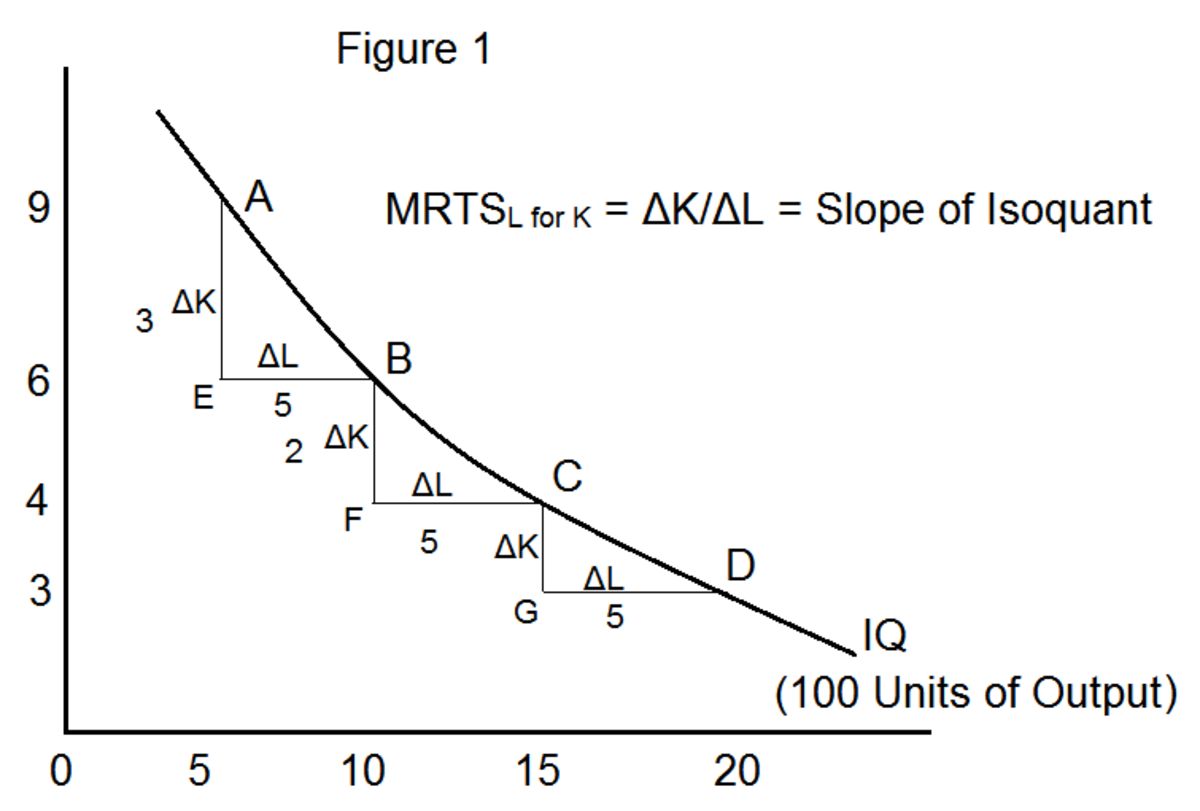Marginal Rate of Technical Substitution MRTS Economic Formula

Marginal Rate of Technical Substitution (MRTS) Economic Formula
What Is the Marginal Rate of Technical Substitution – MRTS?
The marginal rate of technical substitution (MRTS) is an economic theory that illustrates the rate at which one factor must decrease so that the same level of productivity can be maintained when another factor is increased.
The MRTS reflects the give-and-take between factors, such as capital and labor, that allow a firm to maintain a constant output. MRTS differs from the marginal rate of substitution (MRS) because MRTS is focused on producer equilibrium and MRS on consumer equilibrium.
Key Takeaways
– The marginal rate of technical substitution shows the rate at which you can substitute one input, such as labor, for another input, such as capital, without changing the level of resulting output.
– The isoquant, or curve on a graph, shows all of the various combinations of the two inputs that result in the same amount of output.
The Formula for the MRTS Is
MRTS(L, K) = − Δ K Δ L = MP L / MP K
where:
K = Capital
L = Labor
MP = Marginal products of each input
Δ K Δ L = Amount of capital that can be reduced when labor is increased (typically by one unit)
How to Calculate the Marginal Rate of Technical Substitution – MRTS
An isoquant is a graph showing combinations of capital and labor that will yield the same output. The slope of the isoquant indicates the MRTS or at any point along the isoquant how much capital would be required to replace a unit of labor at that production point.
For example, in the graph of an isoquant where capital (represented with K on its Y-axis and labor (represented with L) on its X-axis, the slope of the isoquant, or the MRTS at any one point, is calculated as dL/dK.
What Does the MRTS Tell You?
The slope of the isoquant, or the MRTS, on the graph shows the rate at which a given input, either labor or capital, can be substituted for the other while keeping the same output level. The MRTS is represented by the absolute value of an isoquant’s slope at a chosen point.
A decline in MRTS along an isoquant for producing the same level of output is called the diminishing marginal rate of substitution. The figure below shows that when a firm moves down from point (a) to point (b) and it uses one additional unit of labor, the firm can give up 4 units of capital (K) and yet remains on the same isoquant at point (b). So the MRTS is 4. If the firm hires another unit of labor and moves from point (b) to (c), the firm can reduce its use of capital (K) by 3 units but remains on the same isoquant, and the MRTS is 3.


